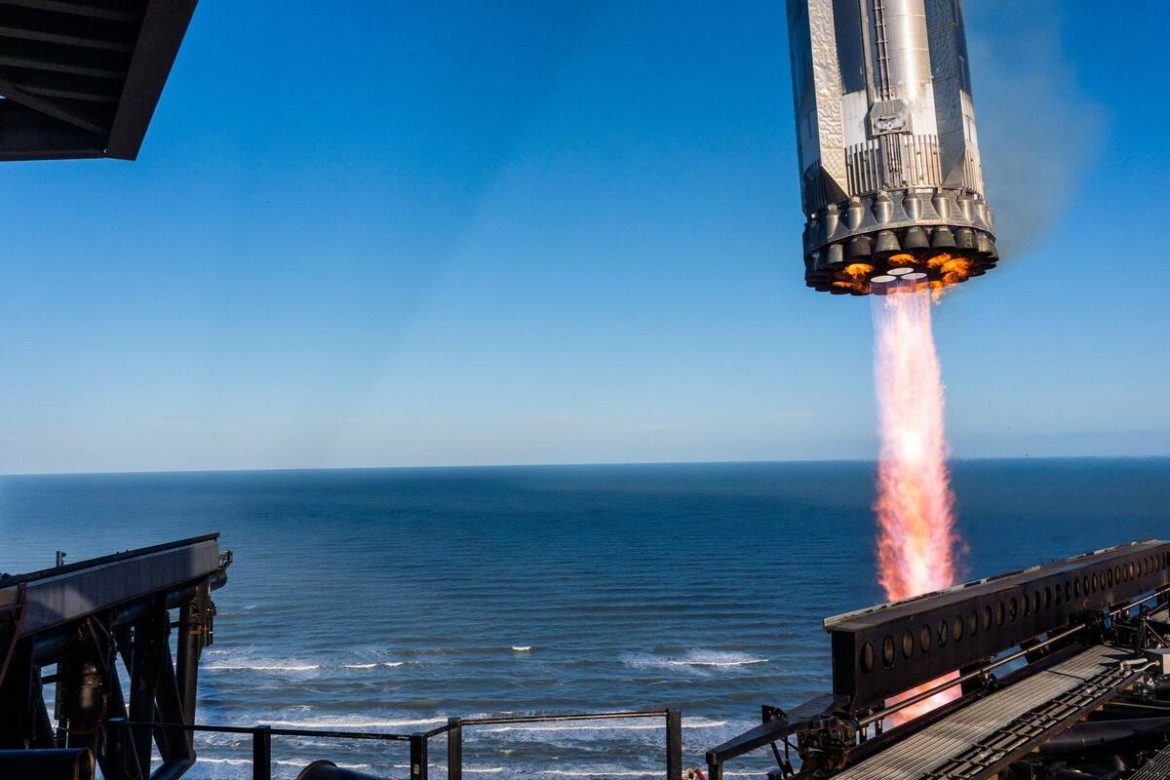The spacecraft experienced a “rapid unscheduled disassembly” shortly after liftoff
The U.S. Federal Aviation Administration (FAA) has announced that it required SpaceX to perform a mishap investigation following the loss of its Starship vehicle during Thursday’s launch operations. SpaceX conducted the seventh test flight of its giant Starship rocket on Thursday. However, according to the company’s initial review, the spacecraft experienced a “rapid unscheduled disassembly” shortly after liftoff. There are no reports of public injuries, the FAA noted, adding it is working with SpaceX and appropriate authorities to confirm reports of public property damage in Turks and Caicos. A mishap investigation is designed to improve public safety, determine the root cause of the event, and identify corrective actions to prevent it from happening again, said the FAA.
The agency added that it will be involved in every step of the SpaceX-led investigation process and must approve SpaceX’s final report, including any corrective measures. A return to flight is based on the FAA determining that any system, process, or procedure related to the mishap does not affect public safety.
SpaceX conducted the seventh test flight of its Starship rocket, marking the first mission of 2025. Unfortunately, the spacecraft was destroyed due to an anomaly in its upper stage. Despite this setback, the test highlighted significant advancements, including a successful booster catch achieved with SpaceX’s innovative “chopsticks” mechanism.
Read more: What went wrong with SpaceX’s Starship Test Flight 7?
Musk’s take on the test flight
SpaceX CEO Elon Musk took to social media to share a video of the falling debris, humorously noting that the incident ensured “entertainment.” He underscored the iterative nature of development, emphasizing that such tests are crucial for advancing toward reusable spacecraft.
According to Space.com, “SpaceX’s Starship megarocket is the world’s biggest and most powerful rocket, and the giant booster that will launch the moon lander for NASA’s Artemis 3 mission that aims to land astronauts on the moon by 2027.” This latest test flight serves as a reminder of SpaceX’s commitment to refining its technology, reinforcing the importance of the SpaceX Starship test flight in the broader context of space exploration.
SpaceX Starship test flight details
The SpaceX Starship test flight took place on January 16, 2025, at 5:38 PM EST from the company’s launch site in Boca Chica, Texas. The 400-foot (123-meter) Starship rocket, recognized as the world’s largest and most powerful rocket, carried 10 dummy satellites for deployment practice.
What is SpaceX Starship?
SpaceX created the Starship as a fully reusable spacecraft and rocket system designed for trips to the Moon, Mars, and beyond, while also facilitating satellite placement and transportation between planets. The upper stage serves as both a passenger and freight spacecraft, with a maximum payload capacity of 100 to 150 tons to low Earth orbit. It features a spacious cabin, life support systems, and a heat shield. The Super Heavy booster, powered by 33 Raptor engines fueled by methane, provides approximately 16 million pounds of thrust during launch.

Characteristics and goals
Both stages of the Starship are designed for rapid reusability to reduce costs, utilizing liquid oxygen and methane, which allows for refueling on Mars. The spacecraft’s versatility supports Earth-to-Earth flights, satellite launches, and crewed missions to the Moon and Mars. Ongoing testing involves orbital and high-altitude flights with iterative improvements, and the Starship plays a crucial role in NASA’s Artemis Moon missions.
Event timeline
The event timeline for the recent SpaceX Starship test flight 7 details several key moments. The Starship successfully lifted off from Boca Chica, and the Super Heavy first-stage booster was caught using robotic arms, a feature referred to as “chopsticks.” However, contact with the upper stage was lost approximately eight minutes into the flight, leading to the rocket’s destruction mid-flight, with debris captured in videos that circulated on social media.


What went wrong in Flight 7?
The issues encountered during SpaceX’s Flight 7 included an upper stage anomaly, where communication was lost due to a failure in the upper stage, echoing a problem last observed in March 2024. The mission aimed to simulate satellite deployment and conduct a near-global orbital flight, but contact was lost before the spacecraft could complete its intended trajectory. Following the November 2024 test, technical upgrades were implemented, including enhancements to the catch tower to address previous damage to robotic arm sensors, as well as upgraded systems designed to facilitate smoother re-entry and improve the satellite deployment simulation.
Significance of the test
Despite the challenges, the significance of the test remains notable. Two Starship rockets are reserved for NASA’s Artemis missions, which aim to land astronauts on the Moon later this decade. Additionally, the test aligns with Elon Musk’s broader vision of enabling interplanetary travel, with Mars as the ultimate destination. The successful booster catch, even in light of the loss of the upper stage, demonstrated advancements in rocket recovery technology.
